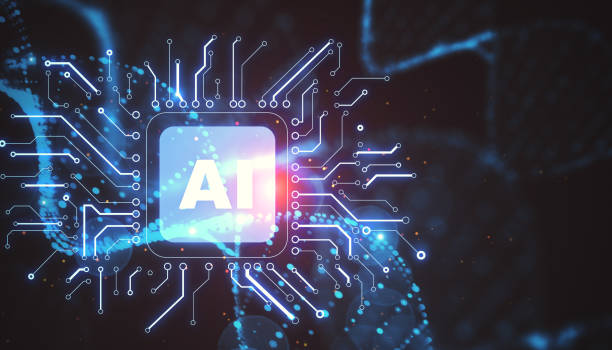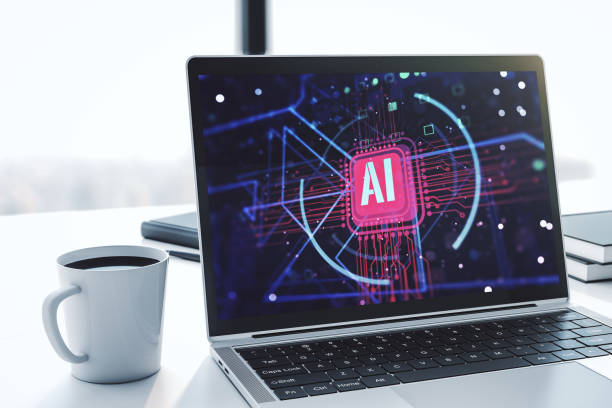`
What is Artificial Intelligence? Definitions and Basic Concepts
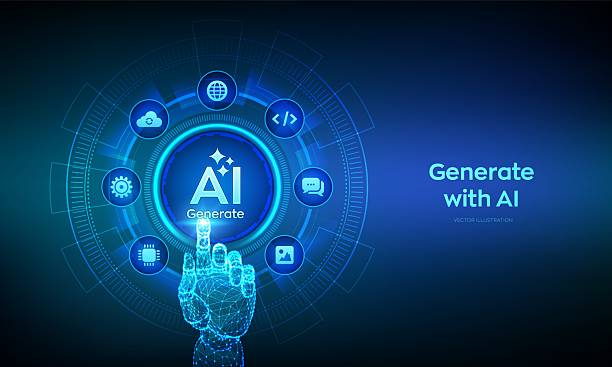
Artificial Intelligence (AI) is a branch of computer science that deals with building machines that are capable of performing tasks that usually require human intelligence.
These tasks include learning, reasoning, problem-solving, understanding natural language, pattern recognition, and decision-making.
In other words, the goal of artificial intelligence is to simulate human intelligence in machines.
There are numerous definitions for artificial intelligence, but one of the most common is the definition provided by John McCarthy, a pioneer of artificial intelligence: “the science and engineering of making intelligent machines.”
This definition emphasizes two important aspects of artificial intelligence: the scientific aspect, which deals with understanding the principles of intelligence, and the engineering aspect, which deals with building machines that implement these principles.
Basic concepts of artificial intelligence include algorithms, data, machine learning, neural networks, and natural language processing.
Algorithms are a set of instructions that tell machines how to perform a task.
Data is the information that machines use to learn and make decisions.
Machine learning allows machines to learn from data without explicit programming.
Neural networks are computational models that are inspired by the structure of the human brain.
Natural language processing allows machines to understand and generate human language.
Artificial intelligence is rapidly advancing and has the potential to change many aspects of our lives.
For more information about artificial intelligence, you can visit this reputable technology website.
#ArtificialIntelligence #MachineLearning #NeuralNetwork #NaturalLanguageProcessing
Does your current online store design not deliver the sales you expect?
Rasaweb specializes in professional online store design!
✅ An attractive and user-friendly site with the aim of increasing sales
✅ High speed and security for an ideal shopping experience⚡ Get free online store design consultation with Rasaweb!
Types of Artificial Intelligence – From Simple Systems to General Intelligence

Artificial intelligence can be categorized into different types based on their abilities and capabilities.
One of the most common classifications is dividing artificial intelligence into two main categories: Weak AI (Narrow AI) and Strong AI (General AI).
Weak AI refers to systems that are designed to perform a specific task.
These systems perform very well in their task but cannot perform other tasks.
Examples of weak AI include facial recognition systems, language translation systems, and movie and music recommendation systems.
These systems are trained using machine learning algorithms and by analyzing a large amount of data to become proficient in performing their task.
For example, a facial recognition system is trained by analyzing thousands of images of different faces to be able to recognize faces with high accuracy.
Strong AI refers to systems that can perform any task that a human can perform.
These systems must have abilities such as reasoning, problem-solving, learning, and understanding natural language.
Strong AI is still in the early stages of development, and no system has yet reached this level of intelligence.
However, research in this area is progressing rapidly, and many researchers believe that strong AI can be achieved in the near future.
In addition to this general classification, artificial intelligence can also be classified based on learning methods.
For example, Supervised Learning, Unsupervised Learning, and Reinforcement Learning are among the common machine learning methods used in artificial intelligence.
Applications of Artificial Intelligence in Various Industries
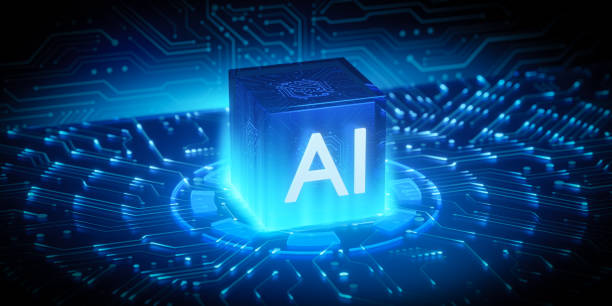
Artificial intelligence is currently used in various industries and has had a significant impact on them.
Some of the most important applications of artificial intelligence include:
Healthcare Artificial intelligence plays an important role in disease diagnosis, drug development, personalized treatment, and improving patient care.
For example, artificial intelligence systems can analyze medical images such as X-rays and MRIs and help doctors diagnose diseases more accurately.
Also, artificial intelligence can be effective in discovering new drugs and designing personalized treatments for patients.
Finance Artificial intelligence is used in risk management, fraud detection, and providing personalized financial services to customers.
For example, artificial intelligence systems can review financial transactions and identify suspicious transactions.
Also, artificial intelligence can analyze customers’ financial data and suggest more appropriate financial services to them.
Manufacturing Artificial intelligence is used in automating manufacturing processes, quality control, and optimizing the supply chain.
For example, robots equipped with artificial intelligence can perform repetitive and dangerous tasks on production lines.
Also, artificial intelligence can identify problems and provide solutions to improve them by analyzing data related to manufacturing processes.
Transportation Artificial intelligence is used in developing self-driving cars, optimizing transportation routes, and improving road safety.
Self-driving cars use sensors and artificial intelligence algorithms to understand their surroundings and drive without human intervention.
Also, artificial intelligence can optimize transportation routes and reduce travel time by analyzing traffic data.
Education Artificial intelligence is used in personalizing education, providing automated feedback to students, and developing interactive educational tools.
For example, artificial intelligence systems can analyze student performance, identify their strengths and weaknesses, and provide them with more appropriate educational content.
| Industry | Application |
|---|---|
| Healthcare | Disease diagnosis, drug development, personalized treatment |
| Finance | Risk management, fraud detection, personalized financial services |
| Manufacturing | Automation, quality control, supply chain optimization |
| Transportation | Self-driving cars, route optimization, road safety |
| Education | Personalized education, automated feedback, interactive educational tools |
Machine Learning – The Driving Force of Artificial Intelligence

Machine Learning (ML) is an important sub-branch of artificial intelligence that allows machines to learn from data without explicit programming.
In fact, machine learning allows machines to identify patterns by observing data and make decisions based on them.
Machine learning is known as the driving force of artificial intelligence, because many artificial intelligence systems use machine learning algorithms to perform their tasks.
There are different types of machine learning algorithms, each suitable for a specific type of data and tasks.
Some of the most common machine learning algorithms include: Supervised Learning, Unsupervised Learning, and Reinforcement Learning.
In supervised learning, the machine is trained using labeled data.
Labeled data refers to data for which the expected output for each input is known.
For example, to train a facial recognition system, images of different faces are used along with the names of the people.
In this case, the names of the people are the data labels.
In unsupervised learning, the machine is trained using unlabeled data.
In this case, the machine must automatically identify patterns in the data.
For example, to cluster customers of a store, data related to customer purchases is used.
In this case, the machine must divide customers into different groups based on their purchasing patterns.
In reinforcement learning, the machine learns by trial and error.
In this case, the machine is placed in a specific environment and receives rewards or penalties for performing different actions.
The machine’s goal is to learn to perform actions that yield the most rewards.
For example, reinforcement learning is used to train a game-playing robot.
In this case, the robot earns or loses points by performing different moves in the game.
The robot’s goal is to learn moves that yield the most points.
Does your current website create the trust that potential customers should have in your business? If the answer is no, it’s time to have a professional and impactful corporate website with Rasaweb.
✅ Completely custom design tailored to your brand identity
✅ Increase lead attraction and the credibility of your business in the eyes of customers⚡ Contact us for a free consultation!
Deep Neural Networks – Inspired by the Human Brain

Deep Neural Networks (DNNs) are a type of artificial neural network that are inspired by the structure of the human brain.
These networks consist of a large number of layers, each layer containing a large number of artificial neurons.
Artificial neurons, like human brain neurons, receive, process, and transmit information to other neurons.
Deep neural networks are used in many artificial intelligence applications because of their ability to learn complex patterns from data.
Applications of deep neural networks include image recognition, speech recognition, language translation, and natural language processing.
These networks are trained using deep learning algorithms, from a large amount of data, to be able to identify complex patterns and perform their tasks with high accuracy.
One of the important features of deep neural networks is their ability to learn abstract features from data.
For example, a deep neural network that has been trained for image recognition can identify features such as edges, corners, and textures in images.
These features help the network to recognize objects in images with high accuracy.
Deep neural networks were not widely used until a few years ago due to their complexity and need for a large amount of data and computing power.
However, with recent advances in hardware and deep learning algorithms, the use of these networks is increasing.
Natural Language Processing – Machine Interaction with Human Language
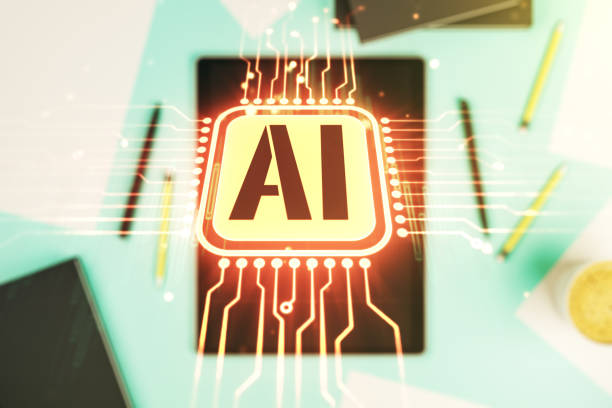
Natural Language Processing (NLP) is a branch of artificial intelligence that allows machines to understand and generate human language.
The goal of natural language processing is to create systems that can interact with humans in natural language.
These systems can analyze, translate, summarize, and generate text.
Natural language processing is used in many applications.
Applications of natural language processing include: machine translation, text summarization, sentiment analysis, question answering, and text generation.
For example, machine translation systems use natural language processing algorithms to translate text from one language to another.
Also, sentiment analysis systems use natural language processing algorithms to detect the emotions present in the text.
Natural language processing is a complex challenge, because human language has a lot of ambiguity and complexity.
For example, a word may have different meanings, and a sentence may have different structures.
To overcome these challenges, natural language processing algorithms use various techniques such as syntactic analysis, semantic analysis, and machine learning.
With recent advances in deep learning, natural language processing algorithms have improved significantly.
Deep neural networks have been particularly effective in learning language representations.
These representations help machines understand the meanings of words and sentences.
Challenges and Limitations of Artificial Intelligence

Despite the remarkable advances in the field of artificial intelligence, this technology still faces many challenges and limitations.
Some of the most important challenges and limitations of artificial intelligence include:
Need for Large Amounts of Data Many artificial intelligence algorithms, especially deep learning algorithms, require a large amount of data for training.
Collecting and labeling this data can be time-consuming and costly.
Problem of Interpretability Many artificial intelligence systems, especially deep neural networks, act as black boxes.
This means that it is not easy to understand how a system has reached a particular decision.
This problem can reduce trust in artificial intelligence systems.
Problem of Generalization Artificial intelligence systems may not perform well in situations that are not similar to the training data.
This problem is known as the generalization problem.
Ethical Issues The use of artificial intelligence can raise many ethical issues.
For example, artificial intelligence systems may make decisions that are discriminatory.
Also, the use of artificial intelligence in automated weapons can pose serious risks.
Security Issues Artificial intelligence systems can be vulnerable to cyber attacks.
Hackers can disrupt the performance of these systems by manipulating the training data or artificial intelligence algorithms.
| Challenge/Limitation | Description |
|---|---|
| Need for Large Amounts of Data | Artificial intelligence algorithms require a large amount of data for training. |
| Problem of Interpretability | It is difficult to understand how artificial intelligence systems make decisions. |
| Problem of Generalization | Artificial intelligence systems may not perform well in new situations. |
| Ethical Issues | The use of artificial intelligence can raise many ethical issues. |
| Security Issues | Artificial intelligence systems can be vulnerable to cyber attacks. |
The Future of Artificial Intelligence – What Should We Expect?
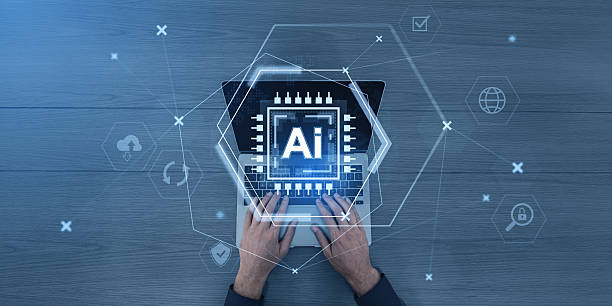
The future of artificial intelligence looks very bright.
With the increasing advances in hardware and artificial intelligence algorithms, it is expected that this technology will be more widely used in various industries in the coming years and will have a deeper impact on our lives.
Some of the most important expectations from the future of artificial intelligence include:
Extensive Automation Artificial intelligence can automate many repetitive and tedious tasks.
This can lead to increased productivity and reduced costs.
For example, robots equipped with artificial intelligence can perform complex tasks on production lines.
Greater Personalization Artificial intelligence can help personalize products and services.
For example, artificial intelligence systems can analyze customer data and suggest more appropriate products and services to them.
Better Decision Making Artificial intelligence can help make better and faster decisions.
For example, artificial intelligence systems can analyze complex data and identify patterns and trends that humans cannot see.
New Scientific Discoveries Artificial intelligence can help make new scientific discoveries.
For example, artificial intelligence systems can analyze scientific data and present new hypotheses that researchers can investigate.
However, it should be noted that the development of artificial intelligence also comes with challenges and risks.
For example, extensive automation can lead to job losses.
Also, the use of artificial intelligence in automated weapons can pose serious risks.
Therefore, it is necessary that the development of artificial intelligence be carried out with care and responsibility.
Does your current online store design not deliver the sales you expect?
Rasaweb specializes in professional online store design!
✅ An attractive and user-friendly site with the aim of increasing sales
✅ High speed and security for an ideal shopping experience⚡ Get free online store design consultation with Rasaweb!
Artificial Intelligence and Employment – Opportunities and Threats

Artificial intelligence will have a significant impact on the labor market.
On the one hand, artificial intelligence can create new opportunities for humans by automating repetitive and tedious tasks.
For example, artificial intelligence can help humans focus on more creative and strategic tasks.
On the other hand, artificial intelligence can be a threat to employment by replacing humans in some jobs.
For example, taxi and truck drivers may lose their jobs with the development of self-driving cars.
The impact of artificial intelligence on employment depends on various factors, including the pace of technological progress, the readiness of the workforce to adopt new technologies, and government policies in the field of education and employment.
In order to take advantage of the opportunities created by artificial intelligence and prevent its threats, it is necessary to take action.
Some of these measures include:
Investing in Education It is necessary to invest in education in the skills needed to work in the world of artificial intelligence.
These skills include technical skills such as programming and data analysis, and soft skills such as problem-solving, critical thinking, and creativity.
Supporting Innovation It is necessary to support innovation and entrepreneurship in the field of artificial intelligence.
This can lead to the creation of new jobs and the development of new businesses.
Developing Supportive Policies It is necessary to develop supportive policies to help people who lose their jobs due to artificial intelligence.
These policies can include retraining, financial assistance, and the creation of new jobs.
How to Prepare to Enter the World of Artificial Intelligence?

If you are interested in entering the world of artificial intelligence, there are steps you can take to prepare.
These steps include:
Learning Basic Concepts First, you should learn the basic concepts of artificial intelligence.
These concepts include algorithms, data, machine learning, neural networks, and natural language processing.
There are many educational resources available online and offline to learn these concepts.
Coursera and Udacity are two online learning platforms that offer numerous artificial intelligence courses.
Learning Programming Languages To work in the field of artificial intelligence, you should be familiar with programming languages related to this field.
Python is one of the most popular programming languages for artificial intelligence.
Other languages such as R and C++ are also used in artificial intelligence.
Working on Practical Projects The best way to learn artificial intelligence is to work on practical projects.
By working on practical projects, you can implement theoretical concepts in practice and strengthen your skills.
Practical projects can include building a facial recognition system, a language translation system, or a movie and music recommendation system.
Participating in Courses and Workshops Participating in artificial intelligence courses and workshops can help you become familiar with the latest techniques and tools in this field.
These courses and workshops provide an opportunity to interact with artificial intelligence experts and learn from their experiences.
Creating a Communication Network Creating a communication network with people active in the field of artificial intelligence can help you find job opportunities and learn from the experiences of others.
You can attend artificial intelligence conferences and events and connect with people interested in this field.
Frequently Asked Questions
| Question | Answer |
|---|---|
| 1. What is Artificial Intelligence (AI)? | It is a branch of computer science that aims to create machines capable of simulating human intelligence and performing tasks that require human thinking, such as learning, problem-solving, and decision-making. |
| 2. What are the main types of artificial intelligence? | It can be classified into weak artificial intelligence (Narrow AI) that focuses on a specific task, general artificial intelligence (General AI) that possesses comprehensive human capabilities, and super artificial intelligence (Super AI) that surpasses human intelligence. |
| 3. Mention some common artificial intelligence applications in our daily lives. | Includes voice assistants (such as Siri and Alexa), recommendation systems (such as Netflix and Amazon), self-driving cars, facial recognition systems, and spam filters. |
| 4. What is the difference between Artificial Intelligence and Machine Learning? | Artificial intelligence is the broader concept of creating intelligent machines, while machine learning is a subset of artificial intelligence that focuses on enabling systems to learn from data without explicit programming. |
| 5. What is Deep Learning? | It is a subset of machine learning that uses multi-layered artificial neural networks (deep neural networks) to process data and discover complex patterns, and is used in image and speech recognition. |
| 6. What are the most prominent benefits of artificial intelligence? | Improving efficiency and productivity, automating repetitive tasks, making better decisions based on the analysis of big data, and developing solutions to complex problems in fields such as medicine and science. |
| 7. What are the main challenges facing the development and deployment of artificial intelligence? | Includes the need for vast amounts of high-quality data, privacy and security issues, bias in data and algorithms, and high development and maintenance costs. |
| 8. Does artificial intelligence raise ethical or social concerns? | Yes, it raises concerns about privacy, algorithmic bias, job loss due to automation, responsibility for errors made by intelligent systems, and the need for a regulatory framework. |
| 9. How can artificial intelligence affect the future of the labor market? | It can lead to the automation of some routine jobs, but it will also create new jobs that require advanced skills in developing, operating, and maintaining artificial intelligence systems. |
| 10. What are some modern or promising technologies in the field of artificial intelligence? | Includes advanced natural language processing (NLP) (such as large language models like ChatGPT), computer vision, robotics, and generative AI. |
And other services of Rasa Web Advertising Agency in the field of advertising
Intelligent Linking: A fast and efficient solution to attract customers with a focus on marketing automation.
Intelligent SEO: Professional optimization for managing campaigns using intelligent data analysis.
Intelligent Direct Marketing: A combination of creativity and technology for managing campaigns through dedicated programming.
Intelligent Custom Software: A fast and efficient solution to increase website visits with a focus on optimizing key pages.
Intelligent Reportage: A combination of creativity and technology to increase website visits through intelligent data analysis.
And more than hundreds of other services in the field of internet advertising, advertising consulting, and organizational solutions
Internet Advertising | Advertising Strategy | Advertorial
Resources
How to complete an artificial intelligence project?
,Artificial intelligence; events and challenges
,Artificial intelligence; Afi’s year of turning point in life
,Artificial intelligence in the service of architecture and urban planning
? To promote your business in the digital world, Rasaweb Afarin Digital Marketing Agency guides you with comprehensive services from website design with a modern user interface to targeted marketing strategies.
📍 Tehran, Mirdamad Street, next to the Central Bank, Kazerun Jonoubi Alley, Ramin Alley No. 6
`

